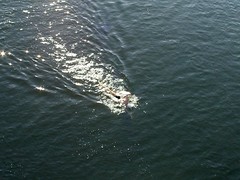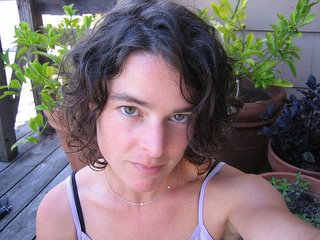3-5-5-5-3

When I was younger, I did not think of myself as competitive. My soccer career, despite what may be suggested by having received a varsity letter, was the implementation of a non-aggression pact between all the players on the field. Friends came to watch me sit on the bench for all but five minutes of game time, while I relieved various players for water breaks.
It's all rather unfortunate, given that I have discovered of late that I love competing. Having no experience at competitive sports, I'm at somewhat of a disadvantage when it comes to racing and training. I lack the requisite technophilia for true triathlon competitiveness: I rode a mountain bike for my first couple of races, without even removing the rear rack. My bike shoes are from the late 80s, purchased off the remainder rack at Bike Nashbar. My tires are the all-weather variety (No flats!), double the weight of race tires. Five seasons later, I don't even have clip-on aero bars. And compounding my racing career, I have little sense of how to race: keeping my focus, knowing when to accelerate, how to attack. And, from Mychal's perspective, I set my goals too low.
This season, I had hoped to get a podium finish. And I got five: two thirds, three fifths.
Next season, I told Mychal, I wanted to shoot for third place in all my races. Which, as a former track star, he found ridiculous. If you're going to shoot for anything, shoot for first.
This season, I had twelve races. Axel was nursing around the clock for the first seven races and through the day for the last five; I was top twenty in all but one (the first, my favorite.) When I set my goal of getting a podium finish, I really didn't think it would happen. So the final, and most debilitating, aspect of my non-aggression pacts is that I lack the confidence to truly believe in myself. Setting a low bar is the easiest way not to fail.
This season, instead of the race bike I've been dreaming about for four years, I'm grabbing some attitude: first place is mine, baby!





